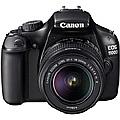Digital Camera Buyers Guide
Digital Camera Types
 |
Compact/Ultra Compact – otherwise called point and shoot cameras; they are designed to be small and easy to carry, they are usually simple to use and don’t require any special photography knowledge as all settings can be done automatically. Due to their size, compact cameras are limited in terms of manual functions and haven’t as brilliant picture quality as more advanced digital cameras. They are great for anyone who is a casual photographer and doesn’t mind the limitations. The price range is very wide as you can get a camera from €50 up to € 300 depending on the make and model. |
 |
Bridge/Hybrid – these are more advanced cameras and resemble DSLR cameras very much. They are usually bigger in size than compact cameras and have a large fixed lens, they share a lot of features with simple digital cameras but they might have some more advanced functions such as manual focus or storing pictures in raw image format. As bridge cameras are something in between the simple and advanced cameras they are great for anyone who has interest in photography and wants to have option of manual adjusting the settings but at the same wants to have the possibility to leave a lot of features to be automated. Prices start from €150 up to €400. |
 |
Digital Single Lens Reflex (DSLR) – these are the most high end cameras (and quite expensive as well) that are used by professional photographers and people who are keen on photography. Since such cameras have advanced features it is worth to have some knowledge on how to properly use them and make most of them. DSLR cameras have larger sensors than other camera types which allow them to take great quality photos even in low light conditions. The other benefits are the interchangeable lenses that can be changed depending on your requirements. This type of digital cameras is for devoted amateur and professional photographers. Price range for a body with lens is set between €400 up to €1100 or even more. |
| Things that are worth checking before purchasing a camera: | |
| Megapixels – this is important in terms of what size photos are you going to print so that you get the best quality. A 5 megapixel camera will allow you to print 10x15cm photos with great quality, if you know you will print pictures on a bigger format you should go for more megapixels. At the moment most of digital cameras have at least 10 megapixels which is suitable for print outs up to 28x35cm. | |
| Zoom – all digital cameras usually break down zoom into 2 types: digital and optical. Don’t look at the digital zoom details at all, it is a waste of time as the quality of photos taken using digital zoom are of very poor quality compared to the ones with optical zoom. As some manufacturers combine the both to show better parameters for the camera, you should check what the value of optical zoom itself is as this is truly important. A 4x or 5x optical zoom is a standard value for compact and ultra-compact digital cameras. Hybrid and DSLR cameras can have 15x to 30x optical zoom. Far the most advanced are the interchangeable lens cameras as the variety of lenses available goes into hundreds. | |
| Battery – a lot of camera operate on regular AA batteries, which might seem handy as you can get these anywhere but in the long run it might work out quite expensive. If you are getting a camera that uses such batteries remember to get high capacity rechargeable batteries which can be charged multiple times and also have quite a long work time. Most of mid and high range cameras operate on rechargeable lithium-ion batteries that are included together with a charger within the camera itself. This is a better technology as it takes less time to fully charge such battery and it can work much longer than AA batteries. |
|
| Memory Cards – some digital cameras have internal memory that allows you to store pictures on it but it usually is very small (apart from some more expensive cameras that have 1 or 2GB internal memory) and insufficient for normal use of camera. You should check if the camera that you are willing to buy has a memory card included (most of them haven’t) if not get one at the same time when getting the camera to avoid disappointment when receiving you camera but not being able to use it. When choosing the size of memory card you have to consider how many pictures are you going to store on it – if you download pictures on your PC or external hard drive you might get smaller capacity card but if you want take a lot of high quality photos you should get a large memory one. Nowadays memory cards of 2 and 4GB are a standard, but there are 8GB, 16GB, 32GB and 64GB available as well. |
|